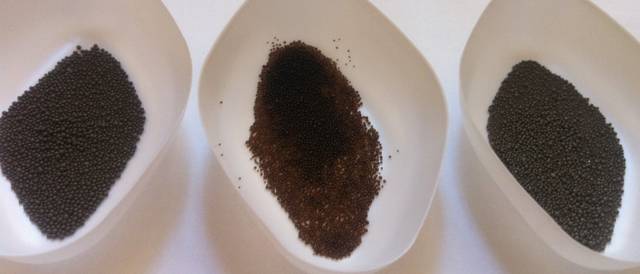USE OF SULPHONIC RESINS AS CATALYSTS FOR THE DEHYDRATION OF SORBITOL TO ISOSORBIDE
Description
An alternative to the traditional refinery where raw materials of fossil origin are processed (oil, natural gas) is the biorefinery, where through different mechanical-physical, biochemical, chemical and thermochemical processes the biomass is processed in a sustainable and integrated way. , for its conversion into a wide spectrum of chemicals and energy. Sorbitol is a relevant chemical, obtained from glucose, present in lignocellulose, in particular hemicellulose and cellulose, by reduction. Dehydration of sorbitol in the presence of liquid mineral acids leads to the formation of isosorbide.
In this context, the present patent proposes the use of sulfonic resins, of the Purolite type, as solid acid catalysts for the dehydration of sorbitol to isosorbide, using sorbitol melted at 140ºC. For this, different reaction parameters have been optimized to achieve the maximum yield of isosorbide (70%), minimizing the leaching of sulfonic groups from the resin, which allows the reuse of the catalyst.
Advantages
Currently, the dehydration of sorbitol to isosorbide is carried out by homogeneous acid catalysis; However, the present reaction system is a sustainable alternative to the industrial process, since it involves the use of sulfonic resins as solid acid catalysts instead of liquid mineral acids that lead to various corrosion problems in the equipment, as well as high separation costs. . The solid catalyst can be reused and the reaction system allows the separation of the reaction products based on their different melting points.
Uses and Applications
Isosorbide has excellent physicochemical properties applicable to different fields of industry. It is an extraordinary precursor of different monomers used for the production of biodegradable polymeric materials, as an additive to improve the strength and rigidity of polymers such as polyethylene terephthalate (PET). In addition, high boiling point bio-solvents, fuel additives, and surfactants can be synthesized through etherification or esterification processes. Likewise, it is an excellent pharmaceutical intermediate (diuretic, and mainly to treat hydrocephalus and glaucoma), since among its derivatives are isosorbide dinitrate and mononitrate, the latter being a compound widely used as a vasodilator for angina pectoris and congestive heart failure.
Keywords
Sectors
Areas
Patent Number
ES2548483B2 Expediente
Applicants
UNIVERSIDAD DE MÁLAGA
Inventors
PEDRO JESUS MAIRELES TORRES, MARÍA JOSÉ GINÉS MOLINA, JOSE SANTAMARIA GONZALEZ, RAMON MORENO TOST, JOSEFA MARIA MERIDA ROBLES
Filing Date
20/07/2015
Protection Level: National (Spain)
Processing Status: Spanish patent








